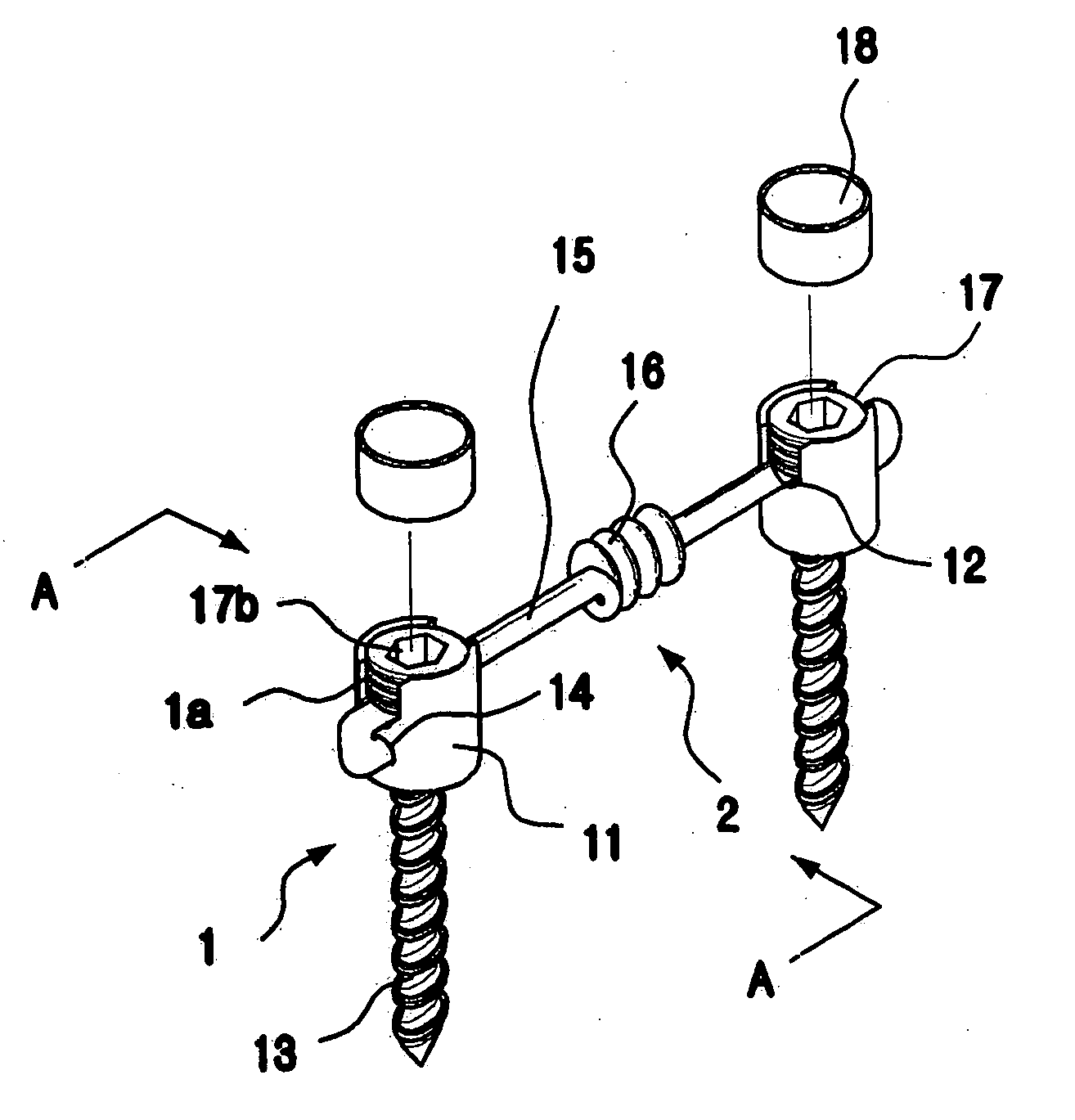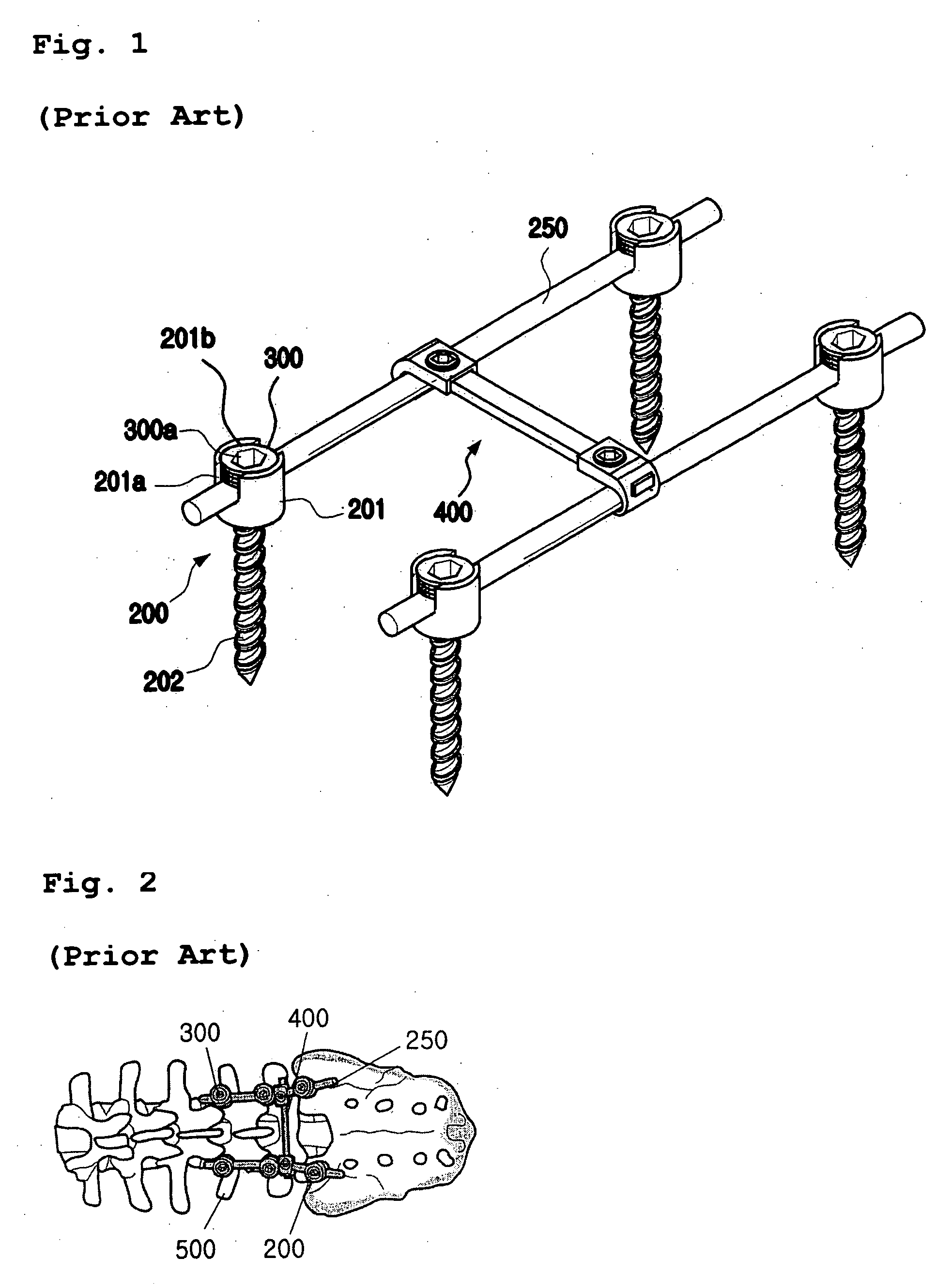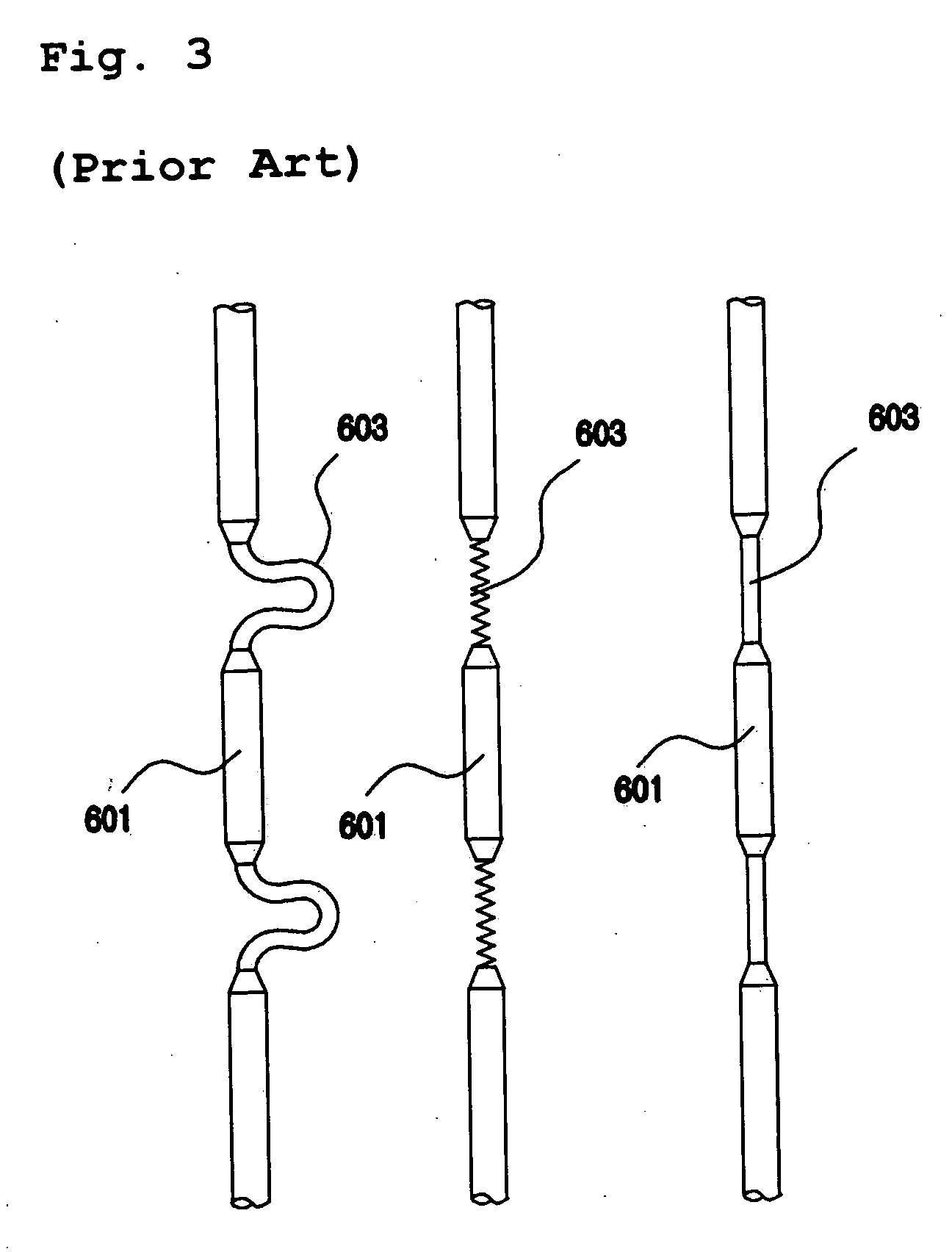Bio-flexible spinal fixation apparatus with shape memory alloy
a bio-flexible, spinal fixation technology, applied in the field of spinal fixation apparatus, can solve the problems of serious back pain, inability to take daily activities, and inability to fix the vertebra of the spine, and achieve the effect of simple connection and easy connection
- Summary
- Abstract
- Description
- Claims
- Application Information
AI Technical Summary
Benefits of technology
Problems solved by technology
Method used
Image
Examples
first embodiment
[0068] A first embodiment will be described in detail referring to FIGS. 5 to 14.
[0069] According to the first embodiment of present invention, the spinal fixation apparatus includes a plurality of pedicle screws 1 implanted into the patient's vertebra; a pair of rods 2 located in both laterals of the spine and connected to the pedicle screws for preventing a movement of the vertebra; and a number of transverse links 3 for providing space between the rods.
[0070] Referring now to FIGS. 5 to 7, the pedicle screw 1 comprises a head 11 formed at a top portion thereof and a thread 13 formed below the head to be implanted into the vertebra. The head 1 has a reception cavity 11a to receive the rod 2 and at least one rod groove 12 at the bottom of the reception cavity 11a. A diameter of the rod groove 12 corresponds to that of the rod 2.
[0071] The rod 2 has a rod body 15 which is bent and then has a hook shape at both ends thereof and the rod 2 has an elasticity section 16 formed in the m...
second embodiment
[0098] In the second embodiment, the head 11 of the pedicle screw 1 is formed with a pair of first rod grooves 21 and 21′ to locate the rod 2 on an upper portion thereof. Also, a pair of rod inserting recesses 22 and 22′ are respectively formed below the rod grooves 21 and 21′ and the rod inserting recesses 22 and 22′ are positioned in the same axis of the rod grooves 21 and 21′, respectively. A female thread 23 is formed on an inner surface of the head 11 at a predetermined depth.
[0099] A head cap 20 is provided on the upper portion of the head 11 and the head cap 20 has a pair of second rod grooves 24 and 24′ corresponding the first rod grooves 21 and 21′. A fixing screw 25 is joined to the female thread 23 passing through the head cap 20 so that the head 11 is strongly fixed to the head cap 20.
[0100] A diameter of the first rod grooves 21 and 21′ and the second rod grooves 24 and 24′ is correspondent to that of the rods 2 and 2′. And the rod inserting grooves 22, 22′ have the sa...
third embodiment
[0104] the present invention will be described in detail referring to FIGS. 16 and 17.
[0105] A plurality of pedicle screws 40 according to this embodiment comprises; a head formed at a top portion thereof, wherein the head has a reception cavity 41a and two parallel rod grooves 42 and 42′ in bottom surface of the reception cavity 41a; and a thread 43 formed below the head to be implanted into a pedicle of the vertebra.
[0106] Two parallel rod grooves 42 and 42′ in the reception cavity 41a contributes to a connection of the rods 50 and the pedicle screws 40 without an additional connector. Here, the rod grooves 42, 42′ have a diameter equivalent to the rod 50.
[0107] A set screw 44 is inserted into the reception cavity 41a of the head 41 of the pedicle screws 40 for preventing a movement of the rod 50. In order to securely tighten the rod 50, the set screw 44 has an outer thread 44a and a recess 44b which has a hexagonal cross-section view in the reception cavity 41a of the head 41. ...
PUM
 Login to View More
Login to View More Abstract
Description
Claims
Application Information
 Login to View More
Login to View More - R&D
- Intellectual Property
- Life Sciences
- Materials
- Tech Scout
- Unparalleled Data Quality
- Higher Quality Content
- 60% Fewer Hallucinations
Browse by: Latest US Patents, China's latest patents, Technical Efficacy Thesaurus, Application Domain, Technology Topic, Popular Technical Reports.
© 2025 PatSnap. All rights reserved.Legal|Privacy policy|Modern Slavery Act Transparency Statement|Sitemap|About US| Contact US: help@patsnap.com



